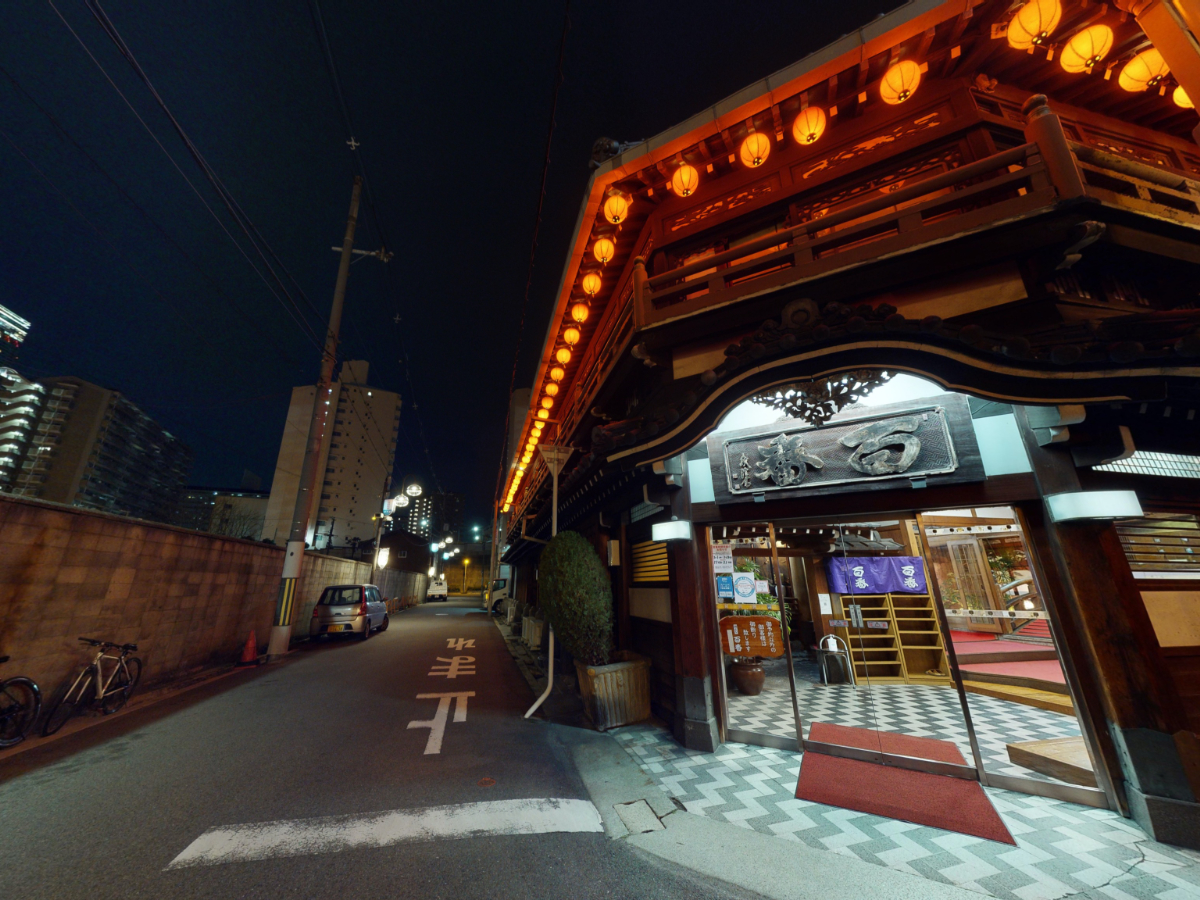
Source: PR Times
Crowdfunding project to save former Osakan brothel-building-turned-restaurant Tai Yoshi Hyakuban
- Tags:
- Crowdfunding / Osaka / Restaurants
Related Article
-

Exude “Taishō Roman” In Comfy Hakama-Style Loungewear Reminiscent Of Japan’s Taishō Period
-

BT21 Cafe Returns to Japan with New Menu for Winter 2018
-

Do Your Part for Disaster Relief in Japan by Buying Delicious Kit Kats
-

The Hello Kitty Bullet Train Fully Revealed In Japan
-

Get Up Close and Personal with Penguins on Japanese Trainline
-

Rilakkuma Cafe In Osaka Introduces Adorable New Christmas Menu


Japan is a country full of architectural marvels and wonders. Whether you’re looking at a historic temple made using the kanawa-tsugi method (entirely free of nails and bolts), or a modern building that calls upon inspiration from outer space and the future, it seems as though the structural designers in Japan have covered it all. What is also wonderful, is the fact that you can sometimes see these two different-age kinds of structures standing right next to one another – the old complimenting the new and vice versa.
Whilst many old buildings still survive to this day through upkeep paid for by tourism and business, a sad truth is that many others fall as silent victims to the passage of time, with some disappearing completely without even a trace or record.
It’s this kind of disappearance that nobody wants to think about; some say that buildings have souls and keep memories, so when they start to deteriorate with age should they be left to rot and be forgotten, or should they be saved and celebrated as a memorial to time gone by?
Now, I don’t know about you, but I have a pretty strong sense of curiosity. If I find the remains of a building foundation, my mind runs wild with the possibilities of what the building that once stood there looked like, who made it their home and/or place of business, and of course, what happened to it and why it fell into ruin. These curiosities often lead me down rabbit holes on the internet, most often ending up in a dead end, and leaving me to my imagination to work out the answers to the majority of my questions. So when I hear about – or see – buildings falling into disrepair, it saddens me, for it means that the building and its purpose are most likely already forgotten.
Located on the outskirts of Osaka’s Tobita Shinchi, Tai Yoshi Hyakuban is a standing example of what structures once looked like in Japanese Yūkaku areas (formerly legal red-light district). Built in the Taisho era, the building is well over 100 years old, and although it has been designated as a national registered tangible cultural property, it is fast falling into disrepair and in desperate need of restoration.
In recent years the building has been used as a restaurant, but due to the impact of COVID-19, sales have significantly decreased over the last year, and it has become difficult for the business to cover the costs of restoration. As a blind eye has been turned to the much needed repairs, Tai Yoshi Hyakuban’s foundation, exterior and interior have begun to fall into ruin.
In order to tackle the building's deterioration, a conservation and renovation project has been launched on Japan’s largest crowdfunding service; READYFOR, in order to help raise the funds needed and seek support from those who care about this cultural part of Japanese history.
Tai Yoshi Hyakuban is located in Tobita Shinchi, which happens to be the largest brothel district in Western Japan. The building was originally part of Namba’s Yūkaku area, but moved to its current location in 1918 following a large fire that burned through Namba in 1912. Tai Yoshi Hyakuban prospered as a brothel in Tobita Shinchi until the Prostitution Prevention Law took affect in 1958. The historical building has been operating as a restaurant since 1970, and received ‘cultural property’ status from the government in 2000.
The buildings of Tobita Shinchi were built during the Taisho era, during a time when the sophisticated culture of the Edo period was beginning to disappear under influence from Western culture, which had been flowing into the country since the Meiji Restoration. These influences can be seen in many of the historical buildings in the area, Tai Yoshi Hyakubun included.
When talking about Tobita Shinchi, you cannot avoid the subject of prostitution in Japan. Before the introduction of anti-prostitution laws in Japan, Tobita Shinchi was a legal brothel area within Osaka that was not looked down upon, but instead praised for it’s entertainment and luxurious atmosphere. When the law took effect in 1958, the brothels of the area famously closed for one night, and reopened the next day under the guise of ‘restaurants’. This facade has allowed the brothels to avoid the law for several decades, with some continuing even to this day under the disguise. This is a serious social issue in Japan that many would rather avoid talking about, but talking about it brings it to the light and can hopefully lead to a solution. Tai Yoshi Hyakuban is a pure restaurant in the Tobita Shinchi area that, if restored and conserved, can continue to act as an example to the hidden brothels that still exist in the area.
Tai Yoshi Hyakuban is unique in that it features Taisho era Yūkaku style architecture and also houses a number of Momoyama (a period during the 16th century where there was increasing interest in the outside world) inspired art due to a major renovation after the war.
The restoration of the building will focus on both repairing and restoring the structure to its original glory, as well as conserving the characteristics of the luxurious interior and artworks.
Since the building is large, the amount of restoration will depend on the final count of money collected, but within the target number, urgent issues such as reinforcing the foundations and preventing damage from rain leaks can be attended to. As part of the restoration the entrance door will be repaired and a PVC rain gutter resembling traditional Japanese style architecture will be installed. In the future, repairs will be expanded according to the amount of support received.
Usually a meal reservation is required to visit Tai Yoshi Hyakuban, and although photography is permitted within the building, visitors are not allowed to freely shoot in the reserved rooms. However, donors to the building’s crowdfunding project will receive the opportunity to take part in a building tour and photography plan. This special tour will be offered to a limited number of people, and will allow donors to explore the building and its Yūkaku style architecture in great detail.
Before crowdfunding began, Tai Yoshi Hyakuban also teamed up with MICRO HERITAGE to create a VR video of the building and it’s interior.
Outline of the crowdfunding project
Project Title:
鯛よし百番」修復へ。飛田百番の魅力、歴史を未来につなぐために。(trans. Restoring Tai Yoshi Hyakuban. Connecting the charm and history of Tobita Shinchi to the future.)
Crowdfunding and recruitment period: 30 June – 10 August 2021
Target amount: 15 million yen
Project format: All of nothing i.e The practitioner can receive the support money only when the total amount of support collected reaches the target amount.
URL: https://readyfor.jp/projects/micro-heritage-hyakuban
Use of funds: Building Restoration
Partial returns: Donors may receive limited goods, meal tickets, commemorative shochu, building tours, lectures etc. *These returns are dependent on reaching the target amount.